“I hope that the reality in the movie will be multiplied by the reality in the game, giving you an unprecedented experience.”
Movie 10: Dialga Vs Palkia Vs Darkrai. Doesn’t that title evoke a monster movie? It does, doesn’t it? And uncharacteristically for a Pokémon picture, Movie 10 sort of was a brawler epic. With titanic two-way then three-way battle scenes at the absolute centre of the film’s dull as dishwater, errrr, elegantly simple plot, Dialga Vs Palkia Vs Darkrai formed a daring piece of Pokécinema. After nine mostly huggable Poké-productions, legendary production studio Toho – of Godzilla fame – finally got to flex its muscles. Overjoyed they must have been!
Now, the Pokémon franchise famously loves to celebrate its milestones, and Movie 10’s eye-catching premise can be considered expressive of a determination to serve fans up something special. But to overwhelm fans with deity-versus-deity gladiatorial action on the silver screen was just one aspect of the planned Movie 10 experience. Just as important – if not more so – was the show that GameFreak prepared on the sidelines, that is, the furious download action intended to take place on players’ Nintendo DS’s in an interaction with the theme and events of the movie. Curious? This is the story of Cinema “Eigakan” Darkrai.
—
The Phantom Pokémon: Darkrai
Let’s start from the beginning, shall we? Who, or what, was this mysterious Darkrai? At the dawn of 2007, Sinnoh’s Mythical count stood at 0 – with the arguable exception of Manaphy, which straddled the Advance and DS generations. Quite unbeknownst to players, the fresh-faced Sinnoh Mythicals of Shaymin, Arceus, and Darkrai had been programmed into Pokémon Diamond & Pearl (D&P). But as of early 2007, their presence had not yet been revealed, the tools to access them not released, and clues about Darkrai’s existence were restricted to a cinematic teaser aired in the credits of Movie 9 and an allusion in D&P’s Cresselia subplot, where a kid in Canalave is found to have fallen into an “endless nightmare” and thrashes in his sleep muttering that “DAR… DARK… is watching” him. At this point in time, then, Darkrai was an entity still shrouded in shadows. Not even variety show Pokémon Sunday was cleared to lift the veil a little and sate fans’ hunger for more scraps of information.
This changed rapidly in February 2007, when a barrage of Darkrai-related news began to appear in several places. Official website pokemon-movie.jp (here), for instance, received its annual thematic overhaul in the middle of the month in anticipation of that Summer’s Pokéfilm: Dialga Vs Palkia Vs Darkrai. With it came a content update previewing Movie 10 in tantalising teaser nuggets. Or so we think. We can’t exactly explore these pages, for the pokemon-movie official website ran on Flash architecture that precluded proper archival capture by contemporary crawlers. Sigh.
Enter CoroCoro
Truthfully, it matters not, for manga magazine CoroCoro Monthly (コロコロ月刊) presented itself as an alternate medium to convey – we can only assume – similar Darkrai information to young audiences. The magazine’s March 2007 issue (released February 15, concurrent with the movie website update) contained a plethora of juicy Darkrai details. Puzzlingly, however, this bountifulness wasn’t immediately obvious from the issue’s cover. Evidently competing with cinematic developments in the world of Doraemon, Darkrai’s silhouette occupied only the bottom portion of the volume’s cover, supported by the tagline: “Darkrai is discovered! The Phantom Pokémon’s Fastest Scoop!”1 「ダークライ発見!! 幻のポケモン最速スクープ!!」 “Scoop” being a loanword taken to mean “breaking and/or exclusive news”.
Inside the issue on p.46, readers discovered an article headline that screamed: “Pokémon #491 makes its appearance!”2 「491番目のポケモン出現!! 」. A sizeable artwork of Darkrai eyeballing the reader with apparent contempt took up much of the page, its claw-like hand outstretched as if to subjugate and subject readers to its will. An accompanying paragraph of flavour text promised “thorough analysis” of the yet unobtainable Phantom Pokémon Darkrai.3 「”現時点ては入手不可能な幻のポケモンを徹底分析するぞ!」 Some of these revelations were immediate: tidbits scattered around the pages delved into Darkrai’s biology, abilities and potential future appearances. Most intriguing of all, the feature explained to readers how Darkrai, like Manaphy, is a Pokémon that does not appear in the course of normal gameplay,4 「(“ダークライはマナフイと同じく通常プレイでは登場しないポケモンなのだ」 and consequently stimulated readers to consider how Manaphy was originally distributed, and ponder what it might imply for Darkrai.5 Manaphy being the obvious reference point as the sole D&P Mythical revealed and given out at that stage. Finally, CoroCoro encouraged readers to not miss the next issue (April’s) slated to reveal (even) more of the Phantom Pokémon’s secrets in the form of a special supplementary booklet!
Before we examine this quaint booktlet, however, let’s take a short moment to zoom out. The somewhat tragic reality of CoroCoro’s big reveal was that to many in Japan and indeed the wider world, Darkrai’s appearance in the mag wasn’t the intended first acquaintance at all. To understand why, we need to look towards the secrets buried inside Pokémon Diamond & Pearl. As mentioned earlier, GameFreak had duly programmed an obtainable Darkrai into D&P; however, they’d quite purposely stuck it in an isolated and normally inaccessible location, and as such, nobody was supposed to know it was there until such time as the company chose to make a shock announcement. Supposed to.
Surf Glitch
There was one entirely unforeseen, as well as unfortunate, flaw in this master plan. You see, as a function of the development challenges that GameFreak grappled with in producing software for a new handheld gaming system (the Nintendo DS), D&P were famously a little rough around the edges on the technical front. Version 1.0 that came out in Japan in September 2006 was particularly riddled with glitches. The Broken Escalator Softlock Glitch. The Arceus Plate Glitch. The GTS Cloning Glitch. The list goes on. Among them was an ever so slight tilemapping error with disproportionate – and some might argue deleterious – consequences. You may already have guessed what I’m hinting at. No, not the “Tweaking” Glitch.6 Though a method capable of achieving the same effect, “tweaking” was discovered somewhat later. In a nutshell, “tweaking” is the infamous method whereby screen transition loading lag is abused to facilitate a void-like screen tear that allows the player to move out of bounds, usually to game-crashing consequences. I’m talking about the Elite Four Surf Glitch.
The gist of this glitch is that by taking advantage of a bugged tile inside Sinnoh’s Elite Four, a Pokémon can be made to Surf inside a doorframe. If immediately dismounted, the player character is free to move out of bounds and, in a series of precise manoeuvres, can be made to navigate between the game’s various areas, or “maps”, and reach normally inaccessible locations. Not least of which is Flower Paradise, where Shaymin resides, or… Newmoon Island, to catch Darkrai. Here’s the best surviving demonstration video I could find (also below), from 2013, by Japanese YouTuber “Misakura” (みさくら).
In this manner, Mythicals Shaymin and Darkrai could be caught without the need for Key Items “Oak’s Letter” and “Member Card” that were meant to gate them – knowledge of which, somehow, was also already public by Summer 2007.7Even though both weren’t officially revealed and distributed over global WiFi until 2009. Presumably, this E4 Surf Glitch came to GameFreak’s attention very quickly, and it was duly patched out in Japanese version 1.1 that began rolling off assembly lines in late 2006. The damage, however, had been done. The cat was out of the bag, not to be put back in, and there’s really no better illustration of this than blogger Laborfox’ casual name-dropping of the “surfing bug” in their May 2007 post, suggesting a casual ‘old news’ familiarity with the glitch and its implications. In a nutshell, the existence of Darkrai and the exploit to obtain it were very much a known quantity to digitally engaged Pokéfans by Summer 2007.
Still, we are talking the Year of our Lord 2007 here. In a pre-smartphone era, not just everyone could pull up exact instructions at at the tap of a touchscreen on how to navigate to Newmoon Island. Moreover, to the extent that the leaking of Darkrai fuelled playground whispers of a Phantom Pokémon lurking somewhere in D&P, it may inversely have done GameFreak a solid by planting a seed in fertile soil. Put differently, even if Darkrai’s official reveal wasn’t a bolt from the blue for many, it still undoubtedly carried a “holy smokes this is real” element of surprise. And now that word of the Phantom Pokémon well and truly was out, it wasn’t not long, in any event, before the promotional train got up to full speed.
CoroCoro Continued & Pokémon Scoop
Per CoroCoro’s April issue, Darkrai now featured prominently on the magazine cover – a spot wouldn’t cede for four straight volumes (April – July). It moreover came with the aforementioned bite-sized “top secret” (超極秘) Darkrai comic book that held – you guessed it – a short manga all about the Phantom Pokémon as well as disclosing further specifics about Darkrai’s unparalleled power in the games. CoroCoro’s June issue, for its part, arrived with a miniature “Darkrai Perfect Guide Book” (ダークライ真相解明BOOK”) that restated much of Darkrai’s unique traits, offered information about 10th Deoxys, served up a Dialga vs. Palkia monster battle comic that anticipated scenes from the upcoming film, and last but not least, seriously hinted at GameFreak’s digital Darkrai distribution plans. CoroCoro’s May and June issue covers indicate another central role for Darkrai in those primary mags as well, though I’ve not been able to locate relevant scans. Taken together, CoroCoro printed an incredible amount of advertising for 2007’s film, and much of it placed key protagonist Darkrai centre stage.
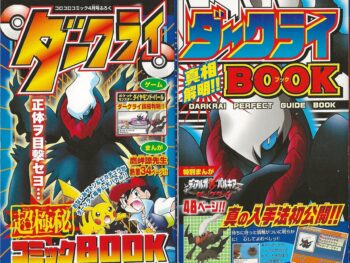
CoroCoro Darkrai supplementary booklets, April 2007 (left) and June 2007 (right).
…And not just CoroCoro. Pokémon Scoop, that colourful Daisuki Club Pokémag, was another key player zooming in on Darkrai. I counted no fewer than 10 portraits of the Pitch-Black Pokémon in a Summer 2007 issue absolutely peppered with Darkrai. Whether the pages treated the Pokémon TCG, the upcoming Movie 10 or the Diamond & Pearl videogames, the Pokémon was everywhere. And much like Darkrai was ubiquitous in Scoop, Scoop was ubiquitous in the real world – available for free at PokéCenters across Japan as well as the many stops of grand carnival Festa PalCity 2007. There was, in other words, no escaping the Phantom Pokémon’s coming.

Pokémon Scoop, Summer 2007. ICanSnake’s collection.
Cinema “Eigakan” Darkrai: Directly… To You!
Now get this. With mania surrounding the Phantom Pokémon whipped up to satisfactorily frenetic levels, executives Tsunekazu Ishihara, Kenjiro Ito, Masakazu Kubo and Satoshi Chida of GameFreak, Pokémon Company and Toho convened a formal joint press conference to make a momentous announcement. In the resulting get-together at Toho Cinemas in Roppongi Hills, Tokyo, on May 14 2007, the execs revealed to attendant dignitaries and members of the press that a certain Pokémon – Darkrai – was to be distributed wirelessly to players of Diamond & Pearl from inside some 300 cinema auditoriums all around Japan concurrently with the theatrical run of Movie 10: Dialga VS Parkia VS Darkrai. Whoa!
Well? Are you impressed? The (gaming) press was certainly suitably enraptured, and Famitsu, ITMedia and DengekiOnline all penned elaborate articles about the presser. In trying to understand how much GameFreak’s plans for Darkrai spoke to the imagination of players at the time, it’s worth underscoring what a bold departure from established standards of Pokémon event delivery this Cinema “Eigakan” Darkrai promised to be. Never before had any event Pokémon been given out by, or at, movie theatres, much less so wirelessly. The sheer number of locations was another factor: distribution at some 300-plus (!) theatres of all shapes and sizes across Japan meant a much broader availability compared to the Sunday Special‘s 10 PokéCenters and Pokémon Towns.
It’s also interesting how this Darkrai event marked the transformation of D&P players from (extremely) patient freebie-seekers, such as those who had travelled to PokéCenters in February and March to bag the commemorative Sunday Specials Shokotan Tropius and Yamamoto Whiscash, to customers effectively paying for an event Pokémon, putting down ¥800-1300 (~$10-15) for the unique privilege to receive Darkrai (and see the film, of course).8 Seen in this light, the PokéCen Sunday distros organised earlier in the year look suspiciously like technological beta tests for GameFreak / TPC, and deliberate wireless primers for fans. With it came increased expectations, as well as increased responsibilities on GameFreak’s part to have the distribution proceed smoothly. In this regard, the sheer scale of the Darkrai operation precluded a slot-2 fallback mechanism in case theatre wireless networks conked out en masse. The event was make or break for GameFreak; it simply had to go well. But, as judging from May’s grand press conference, Pokémon execs were undaunted in the face of this challenge, confident that their local wireless distribution technology was going to deliver.
A confidence which, incidentally, hardly rested on a wing a prayer, but rather was borne of a lengthy wireless tech development process and extensive in-theatre road testing. That we have any insight into these dynamics at all is thanks to Toho’s Senior Managing Director, Mr. Senda, who proffered his thoughts on the surmounted technical hurdles at the May 14 conference. No single source gives a definitive account of the remarks made by Senda; however, by piecing together coverage by ITMedia and movie house Toho itself, we can get a sense of the man’s comments. Both sources are in agreement that Senda observed how there were “various twists and turns” before the “wireless communication introduced could be implemented”. ITMedia then went on to quote Senda verbatim as saying:
“In November 2004, there was a request from the [Movie 10] Production Committee to try a new promotion for the 10th Anniversary. That culminated in the wireless communication that we will show off this time. When we presented [2003’s Wishing Star] Jirachi, delivery was time-consuming and faced various problems, such as [players] not being given a gift…”9 Source: https://nlab.itmedia.co.jp/games/spv/0705/14/news044.html
Right. Movie 7 Jirachi wasn’t given out wirelessly, nor in theatres. Rather, it was an Advance Ticket slot-2 distro handled by PokéCenters (like “10th” Deoxys) and therefore clearly a very different animal to Darkrai’s planned mass wireless giveaway, which was apparently inspired in part by the limitations inherent in Jirachi’s slow and menial delivery method. Incidentally, note that the committee’s request came in November of 2004, three years before Movie 10 premiered. Talk about long lead times! Toho’s summary of the initiative’s backstory continued on:
“It took three years to clear the [wireless] technical problems. With the approval of the movie theaters, the method will be implemented this time. We have been experimenting in theaters around Japan since March, and have just completed tests at 276 theaters without problems. This year, we plan to deploy the distribution in about 350 venues … and we hope to complete our testing in all screening theaters the end of May [ie., six weeks before the start of the film’s theatrical run on July 14].”10 Source: https://web.archive.org/web/20070518003022/http://www.toho.co.jp/movienews/0705/06pokemon_tk.html
The whole endeavour begs the question: why assume this much risk? Players would indubitably have been content to receive Darkrai by any old conservative method! As you might expect, there was more to GameFreak’s ways than the old JFK quip of doing things not because they are easy, but because they are hard. The vision driving the desire to deliver Darkrai to players in-theatres while seated for Movie 10 was outlined neatly for us at the May 14 meeting by Tsunekazu Ishihara, President of Pokemon Co., Ltd, who was quoted as saying:
“The main purpose is to let the audience experience the ultimate cooperation between movie media and game media. The protagonist who played an active part in the movie will come into the game. I hope that the reality in the movie will be multiplied by the reality in the game, giving you an unprecedented experience.”
Right. The Experience™! Comparatively mundane-seeming in light of today’s ubiquitousness of wireless connectivity, at the time, this real-time coupling of film and game via the aether blew press and players away. Seriously. Impressed journalists dutifully echoed Ichihara’s sentiment; Famitsu spoke of “a true collaboration between games and movies”. And in a retrospective tweet made 13 years later, in 2020, one @kusakari427 fondly recalled this “world’s first” instance of a Pokémon protagonist being distributed concurrently inside auditoriums.
Of course, it can only have helped whip up excitement that the lovely Shoko Nakagawa was recruited to perform a live demonstration of the Darkrai acquisition procedure. Taking to the stage after the bigwigs had had their say, Shokotan first spoke a few words about her Movie 10 VA guest role and then, Nintendo DS in hand, proceeded to claim world’s first Darkrai! As she stood behind a lectern going through the motions of wireless Mystery Gift, every second of the in-game action was recorded via – presumably – a capture card and concurrently beamed to a huge overhead projector screen for the audience to take it all in. Some moments passed… And then, accompanied by a hearty shout of “GET!” (キタ!), Darkrai arrived on Shoko’s copy of D&P. The Pokémon Company sensed an opportunity to further enthrall the media, and attendant members of the press were subsequently lent Nintendo DS systems with Sinnoh games inserted for them to personally try their hand at pulling in a Darkrai over local wireless connection – a process of which ITMedia, Famitsu and DengekiOnline all reproduced photographs.
Now, much like with Darkrai’s original reveal in February, the wireless in-theatre distribution plan was huge news – but not to all. As blogger Tomogon noted dryly on May 14: “The information had been leaked on the internet in advance that it [Darkrai] was to be delivered by wireless communication at theatres.” A group of fans thus had grapevine foreknowledge of what was coming. I’m not sure of the source of this information leak. It may have stemmed from premature sales of CoroCoro’s June issue (release date May 15), which rehashed details of Darkrai’s distribution and provided a wealth of supplementary material in the form of a separate yet complementary “Darkrai Explanation Booklet” (ダークライ真相解明BOOK”).11 Source is: http://www5d.biglobe.ne.jp/m_yokko/07h.htm Either way, as early as May 11, blogger laborfox shared a high-res theatrical promotional poster to their blog (see below) which left very little to guess about the basic principles, at least, of the Darkrai obtain process.
Promotion! Promotion! Promotion!
As the Movie 10 release date drew closer, the Pokémon promotional machine went into overdrive – with Cinema Darkrai at the crux. The core message of the Movie 10 publicity campaign was very much not just “see this movie (because it’s fantastic)”; rather, it was very explicitly “see this fantastic movie and experience downloading the film’s protagonist Darkrai to your game wirelessly in real-time as you’re seated in front of the silver screen! Whoa!”
This overarching campaign theme was on display at another media shindig, held at Nakano Sun Plaza Hall, Tokyo, on July 1 – precisely two weeks ahead of Dialga Vs. Palkia Vs. Darkrai theatrical release. Best considered a Movie 10 preview event, it was headlined by Director Kunihiko Yuyama (湯山邦彦) and many of the film’s (guest) voice actors – including Sunday’s own resident comedy trio Robert – who collectively discussed their respective roles.12 Fun fact: Shokotan made her first guest VA appearance in Movie 10; the first of many! Tellingly, Darkrai WiFi was very purposely made available during the advance screening, and once more, impressed journalists got to experiment with the technology and walked away keen to share their thoughts on the downloadable Darkrai in subsequent write-ups. Mynavi.jp, for instance, reported with a sense of privilege that July 1 had been Darkrai’s first-ever distribution. (Factually incorrect, I might add.)
The downloadable Darkrai’s centrality was equally obvious, if not more so, in the Movie 10 publicity campaign aimed directly at the general public. In early July, Yahoo Kids put up an information page all about the downloadable Darkrai’s merits, obtain method, and distribution window. Notably it included a captivating image of Darkrai bursting from the cinematic silver screen and floating towards an outstretched Nintendo DS as Pikachu looked on in amazement, mouth agape, stunned by the magic of this theatrical download. This graphic proved to be the promotional campaigns’ primary visual, as it appeared on official websites as well as in third-party coverage by outlets such as Famitsu. Moreover, it was made into a physical poster for use by stores and cinemas (and leaked online in this form in early May, per Tomogon’s blog). Pokemon-movie.jp also received yet another makeover, promoting the 10th Deoxys and Eigakan Darkrai event Pokémon now as well as the film itself.
True to the adage that (motion) pictures say more than a thousand words, the Pokémon Company also stitched together a 30-second cinematic trailer to promote Darkrai (see below). Once again, it featured the Phantom Pokémon rushing straight from the silver screen into astonished children’s Nintendo DS’s! If their choreographed “aaaah”s weren’t enough to convey amazement, the trailer had them verbally marvel at the wonder of downloadable Darkrai in saying “Yes! Darkrai!” (やった! ダークライ!) I’m not sure whether this clip aired on national television or exclusively online, nor do I know when it was broadcast, but the fact it was put together at all once again confirms how eager the Pokémon bosses were to push the film-to-game Darkrai angle.
In tandem with this Yahoo Kids coverage and cinematic trailer, the pokemon.co.jp official website launched a “how to get Darkrai” instructional page that provided a stepwise preparatory picture guide aimed at ensuring hitchless receipt of Darkrai. Pokémon execs really wanted all kids to walk away from theatres happy! The guide reminded readers to charge their DS systems before heading down to cinemas and to minimally advance their D&P games through to receiving a Pokédex from Prof. Rowan (and thereby unlock the Mystery Gift function).
The page its next few paragraphs had the trappings of a wondercard management crash course, with it educating readers what exactly was a wondercard (or “mysterious card” (ふしぎなカード) in Japanese), where and how to view them, the conditions for binning them, and how to in fact do so. And, it emphasised, if you already had the maximum of 3 wondercards stored from past Pokémon events, one had to be deleted in order to successfully receive Darkrai. With up to 10 unique Sinnoh event Pokémon available through September 2007, clearly GameFreak worried tremendously about players unconsciously running up against the storage limit and failing to download Darkrai. In a broader sense, the 3 WC limitation was unfortunate and never sat well with players, who had an understandable tendency to collect and retain these information cards as digital keepsakes. It was still an issue by the time Golgo Octillery rolled around in October 2007; so much so that GameFreak had the Chief author a reminder on the card’s inscribeable obverse that implored fans to delete it after use, encouraging players to break the habit. Suffice to say that Generation Unova wisely expanded the number of card album spaces to 12. But I digress.
With zero hour fast approaching, the final important promotional prong was that variety TV show watched by hundreds of thousands of kids around Japan: Pokémon Sunday. Back-to-back episodes (#143 and #144) that could rightly be called movie specials lavished attention on the soon-to-release feature film. In a dedicated segment on Sunday #143 (aired July 8), news anchor Munchlax (yes, you read that right) again implored viewers to keep two or fewer WC on file in order to successfully receive Darkrai, going so far as to insert WC deletion demonstration footage with “10th” Deoxys used as the example. The episode went on to tease the movie scene where Darkrai first rises from the earth to expose itself, and then broadcast an interview by Shokotan with Movie 10 Director Yuyama where he highlighted six notable things about the film. After that, a tape played of comedy trio “Robert” roughing it out in the recording studio to voice their VA guest roles, followed by more graceful pictures of Shokotan doing the same. Finally, Sunday showed Yamamoto, Baba and Akiyama going about a busy shopping street handing out giant 10th movie anniversary posters. How is all that for promotion?!
A week later, the big day had arrived. At long last, Movie 10 was live in cinemas. In Sunday #144 (aired July 15), Yamamoto, Baba and Akiyama could be seen journeying to Shogakukan Theater, Tokyo, to make an appearance at what I can only assume was an opening day movie screening. Unlike the general promotional message of Sunday #143, the underlying objective this time was to imprint on the TV audience just how much fun children were having pulling in their ultra powerful Darkrai! In a clip all about the downloadable Darkrai, Robert fired the first shot by having Baba comment that an “awesome Pokémon” could be received.13 すごいポケモンがもらえるだよ In subsequent scenes, highly enthusiastic kids could be seen flashing their Nintendo DS’s at the camera, showing off said newly obtained Cinema Darkrai. The segment then cut to a title card claiming that the receivable Darkrai was super strong! In-game battle footage played of Darkrai drubbing Palkia and Dialga with their very own signature moves Roar of Time and Spacial Rend, before casually brushing off Palkia’s super-effective counterattack courtesy of a held Enigma Berry.14 The Enigma Berry had been a hitherto unobtainable item in D&P except through e-Reader shenanigans. It is rather useful in competitive battle, as it restores the holder’s HP if hit by a foe’s super-effective attack. Finally, the reel cut back to Yamamoto, Baba and Akiyama comfortably lazing in cinema seats, eyes glued to the screens of their personal Nintendo DS systems as they pulled in Darkrai of their own. The message couldn’t be more enticing: come claim your own Darkrai. It is fantastic! (For good measure, the episode reminded viewers one last time of the 3 WC restriction. Yeah.)

Clockwise, from top-left: (1) Darkrai is super strong!; (2) Roar of Time and Spacial Rend; (3) On receiving Darkrai, the crowd goes wild; (4) Robert are thoroughly amazed! Stills from: Pokémon Sunday #144, via pocketmonsters.net
This Darkrai of Mine
Having been subjected to this ceaseless propaganda, it was finally time for fans to relish in The Darkrai Experience™! Now, it’s apparent that Movie 10 succeeded in attracting a mixed all-ages crowd. Business news outlet MeiekiKeizai reported in a July 2007 article that since the movie’s release, it “had been gaining popularity mainly among elementary and junior high school Pokémon fans, and also among game fans in their 20s and above.” Blogger oko-bou’s anecdotal observations painted a similar picture. Having made their way to the cinema on opening weekend, they described spotting a broad demographic of Poké-moviegoers: parents with children, groups of elementary schoolers and junior high students – all “already quite excited in the lobby of the movie theatre” – as well as some high school students, and couples. Plenty of adult bloggers chronicled solitary or family movie visits on which they excitedly and unabashedly claimed a Darkrai for their own: laborfox, who had tracked Movie 10 developments on his blog for months; nyacchi, who took paid leave to watch only their third ever Pokéfilm; and Tomogon, who accompanied his fast growing up kids for perhaps their last Pokémovie together. Surveying their words, I cannot but conclude that their accounts uniformly brim with a genuine excitement, even if the Darkrai obtain process was – for all the hype – ultimately rather mundane.
On entry, moviegoers were handed a Darkrai leaflet that explained exactly when the Pokémon could be downloaded and reiterated the required steps in an infographic not altogether dissimilar from the Sunday Special information posters. Unless, of course, you mistakenly refused the Darkrai information sheet thinking it was a kid’s handout, as did blogger nyacchi, and were consequently left bewildered on the appropriate time to grab the Phantom Pokémon. (For about 10 minutes before or after the film.) Reports indicate that a custom Meowth animation appeared on the silver screen to remind the audience when the Darkrai distribution window was about to close.15 See, for example, the observations so by blogger “genaorin”: https://plaza.rakuten.co.jp/g3naorin/diary/200707150001. Fun fact: the wiliest of foxes were able to cheat the system a little. Blogger “4p99a” commented how the Darkrai wireless signal reached well beyond the auditorium to over by the restrooms in their particular cinema, and Tomogon, who came to watch Pirates of the Caribbean, described casually strolling over to the vicinity of the hall where Movie 10 was being screened and “could receive it [Darkrai] easily” (here).16 Tomogon went on to comment a touch guiltily how he planned to see the Pokémovie some days later his / her kids, whose Darkrai would be “properly received at that time.” Better safe than sorry, the network engineers in charge must have thought!
By all accounts, the distribution went down smoothly across the board. Blogger laborfox, for instance, wrote of making sure to see the film on opening day and grabbed the Phantom Pokémon without a hitch straight away, surrounded by – in his mind – pesky overexcited children who shouted “GET!” on snagging Darkrai. Blogger Dekohachi3 similarly told of sharing his Festa Electabuzz wondercard with a child in an adjacent seat, before regretfully erasing it to make room for the arrival of Darkrai. In light of these many stories, it’s somewhat surprising that few moviegoers appear to have photographed and/or recorded the Darkrai obtain process. Perhaps the dim cinema lights posed a hindrance, or perhaps players were simply too excited to remember to take a breather and document. As far as I can tell, only that indefatigable purveyor of all events Sinnoh, Pikachuftt, produced a series of step-by-step in-cinema redeem photographs on their blog. But, no matter.
As touched upon earlier, Cinema Darkrai knew the signature and until then exclusive moves of Sinnoh’s Legendaries Palkia and Dialga: Spacial Rend and Roar of Time. Additionally Darkrai came with Nightmare and Hypnosis, and not, for some reason, Dark Void, which is the move it uses in Movie 10 to put interlopers in a trance-like dreamstate. Now, for more competitively oriented players, Darkrai was a real treat: with a monstrous base 135 SpAtk and a blazing 125 Speed, and access to Nasty Plot and Dark Void, the Pokémon was the very definition of an Uber (the Smogon tier, not the taxi company). To make sure all understood the special qualities of Cinema Darkrai, official site Pokemon.co.jp put together a Darkrai informational page in the style of 10th Deoxys that incorporated many appealing graphics to highlight Darkrai’s moveset, held item (Enigma Berry), ball type (Cherish) and ribbon (Classic). In case you were wondering, Cinema Darkrai’s OT “Eigakan” えいがかん literally translates to “movie theatre”, referencing Darkrai’s origins as a cinema distribution, while its TID of 07147 corresponds to the film’s theatrical premiere date of July 14, 2007.
 Recipients who subjected Darkrai’s wondercard to a closer inspection stood to discover another surprise. The usual back-of-the-wondercard personal message instructed players to surf to a Yahoo Kids webpage (here), and key in the password “Oracion” (オラシオン). Oracion was, of course, the name of the magical melody that, in Movie 10, soothes Dialga’s and Palkia’s furious rage and saves the town of Alamos from disappearing into the void of alternate space-time. On entering the keyword, a semi-secret portal with five quiz questions – how very Japanese! – opened up, and on answering them all correctly a “special movie” loaded in. What the clip showed exactly, I’m sadly unable to tell you – our source, Pikachuftt, wasn’t explicit about it. (Pika did take care, however, to reassure readers not to sweat a possible wrong answer; the page gave you infinite retries!)
Recipients who subjected Darkrai’s wondercard to a closer inspection stood to discover another surprise. The usual back-of-the-wondercard personal message instructed players to surf to a Yahoo Kids webpage (here), and key in the password “Oracion” (オラシオン). Oracion was, of course, the name of the magical melody that, in Movie 10, soothes Dialga’s and Palkia’s furious rage and saves the town of Alamos from disappearing into the void of alternate space-time. On entering the keyword, a semi-secret portal with five quiz questions – how very Japanese! – opened up, and on answering them all correctly a “special movie” loaded in. What the clip showed exactly, I’m sadly unable to tell you – our source, Pikachuftt, wasn’t explicit about it. (Pika did take care, however, to reassure readers not to sweat a possible wrong answer; the page gave you infinite retries!)
Movie 10’s theatrical run came to an end in late September 2007. When the dust settled, it became clear that Movie 10 had pulled in a return-to-form ¥5.02 billion in domestic revenue. To put those numbers into context: only the first two Pokémon movies, 1998’s Mewtwo Strikes Back and 1999’s Power Of One had performed better.17 The first nine Pokémon movies had an average theatrical viewership of 4.28 million and earned an average ¥4.6 billion in box office revenue; in the words of Toho Director Senda: these had been “unprecedented results in Japanese movies” rivalled only by Ghibli in the animated film sector. See: https://nlab.itmedia.co.jp/games/spv/0705/14/news044.html Reported business news outlet MeiekiKeizai on July 23, 2007: “Visitor numbers are up more than 150% compared to the previous film.”
In breaking down the contribution of event Pokémon to Movie 10’s financial success, it would be remiss to credit Darkrai alone. After all, Anniversary “10th’ Deoxys had been on the Advance Ticket bill as a purchase bonus, and early ticket sales, too, had seen a pronounced spike from Movie 9. The fact remained, however, that Deoxys was ultimately an old Legend updated for a Sinnoh rerelease, and for every fan excited to have a fresh Deoxys in their Diamond & Pearl, two jumped up and down over the imminent debut of Darkrai.
To the aforementioned business outlet Keizei, which referenced Darkrai’s distribution in the same breath as Movie 10’s impressive financial and viewership figures, there was certainly no questioning the direct connection between the two. And to make the link more anecdotally explicit, one “pclop” reminisced years later how “movie-related distribution Pokémon were gorgeous every time, holding unique items and knowing special skills”, adding that it was “no wonder” that there were people seeing Pokéfilms for the distribution Pokémon rather than the movie itself.18 Full quote is: 「映画関連の配信ポケモンは、ここで初出のアイテムを持っていたり、特別な技を覚えていたりと、毎度豪華ですよね。映画自体より、配信ポケモンが目当ての人がいるのもうなづけます。」 Furthermore, in a fact not lost on players, choosing not to acquire Cinema Darkrai meant reconciling oneself with the inability to independently complete the Pokédex, for this Pokémon #491 was – through to Spring 2008 – available via this Movie 10 theatrical avenue alone.19 Though fans couldn’t have known it at the time, with the Japanese release of Pokémon Ranger: Shadows of Almia, another Darkrai became available, and with the 2009 global WiFi release of the “Member Card” Key Item, yet another. Noted blogger “rimml.tea”: “If you skip Darkrai, it will be impossible to fully complete Pokémon, so [getting] it is indispensable.” It was then, or potentially never for a personal Darkrai.
In any case, we can conclude that the relationship between Advance Ticket Deoxys and Cinema Darkrai was very much synergistic in feeding the presence, popularity and revenue stream of Movie 10. Unsurprisingly, Pokémon execs seem to have reached the same conclusion. Fans could read the tea leaves, too: blogger “nyacchi”, for instance, predicted that any Pokémon movie distribution would follow the same template in 2008. And he / she was right. The “Double Legendary” combination of an Advance Ticket Poké-bonus plus thematic in-theatre distribution was stratified into a business model for Giratina and the Sky Warrior and Arceus and the Jewel of Life. Indeed, with Regigigas to Shaymin (Movie 11) and “Shokotan” Pichu to Arceus (Movie 12), we might rightfully speak of a veritable “Eigakan” series of event Pokémon. But that, I should think, is a topic for another day!
- Harvest Moon 3 (2001) - March 5, 2020
- Pokémon Trading Card Game 2 (2001) - February 5, 2020
- Yu-Gi-Oh! Dark Duel Stories (2002) - January 5, 2020

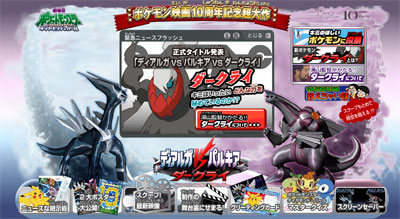
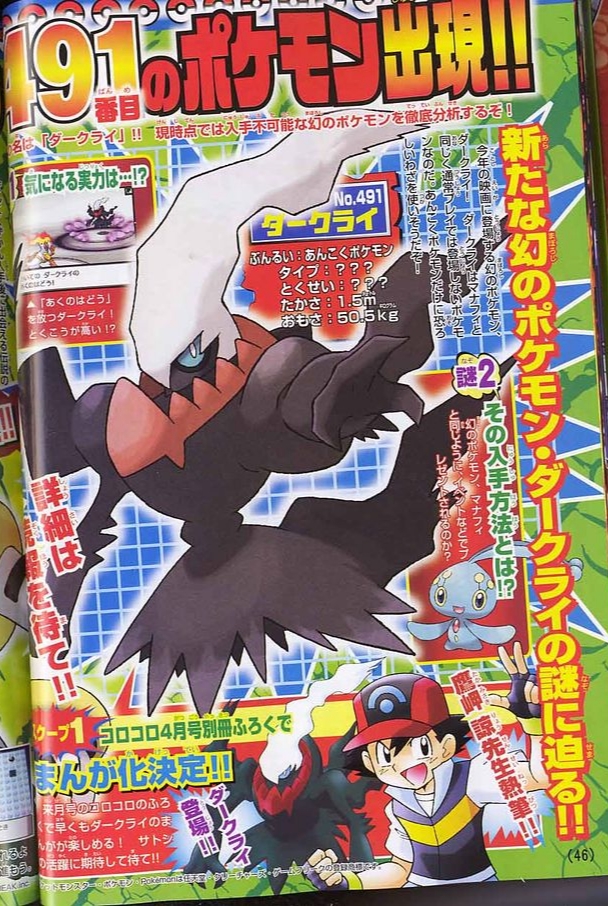
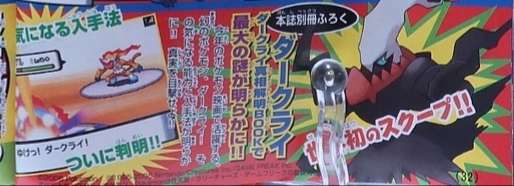
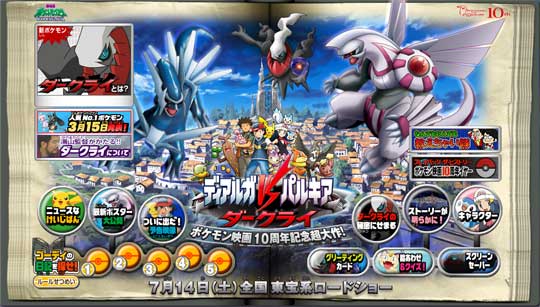
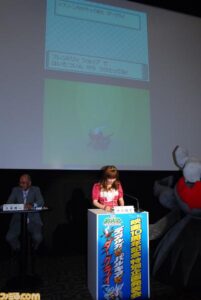
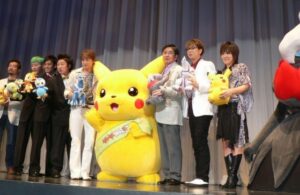
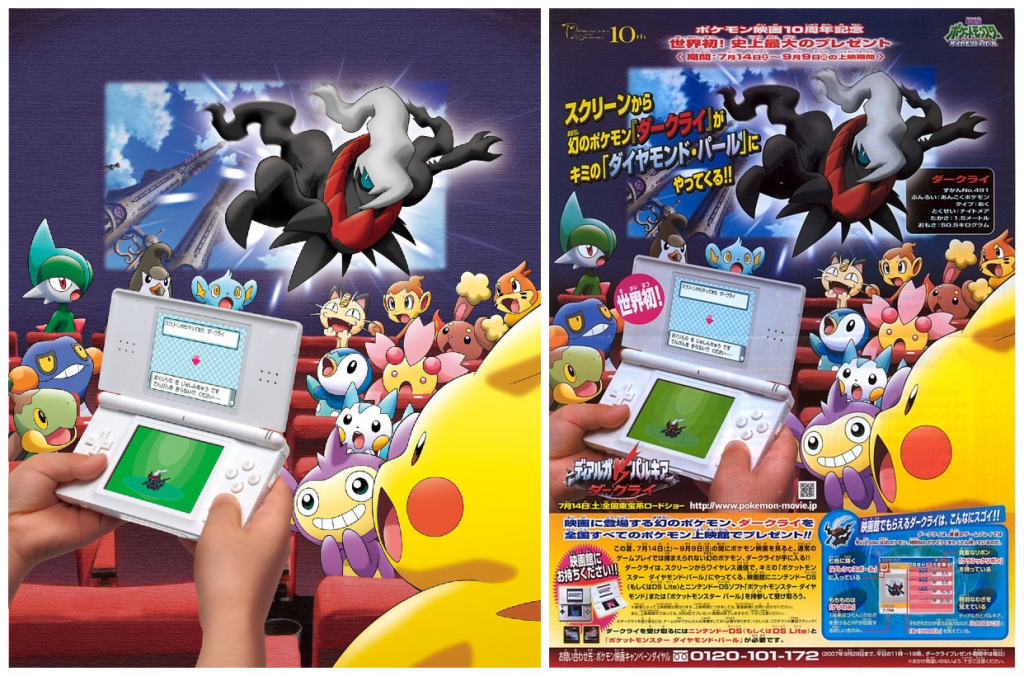
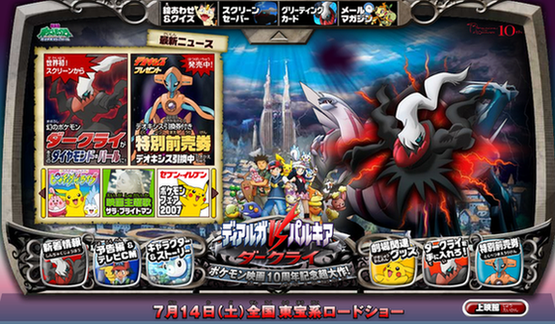

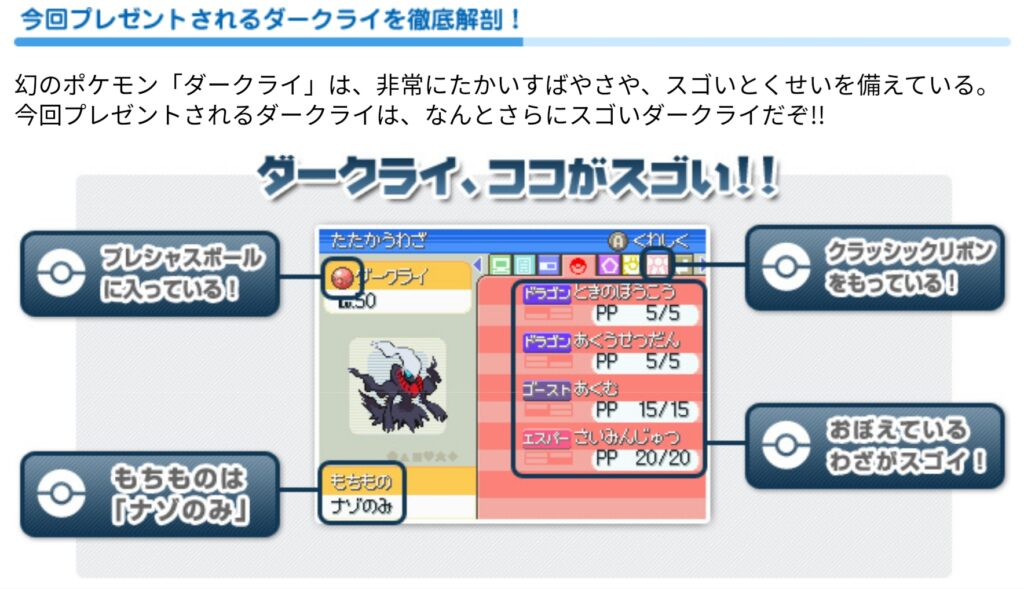
 </a
</a